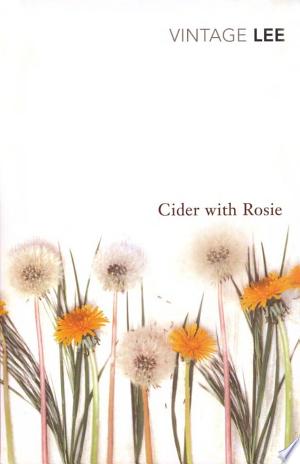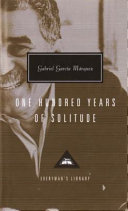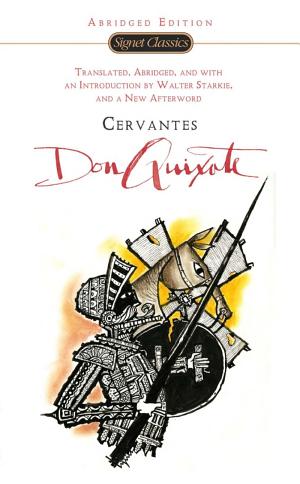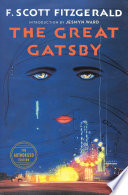"Cider With Rosie" Summary
By Laurie Lee
classics | 240 pages | Published in 2011
The classic evocative tale of an idyllic childhood in the English countryside Cider with Rosie is a wonderfully vivid memoir of childhood in a remote Cotswold village, a village before electricity or cars, a timeless place on the verge of change. Growing up amongst the fields and woods and characters of the place, Laurie Lee depicts a world that is both immediate and real and belongs to a now-distant past. ‘Remains as fresh and full of joy and gratitude for youth and its sensations as when it first appeared. It sings in the memory’ Sunday Times
| ISBN_13: | 9781407073361 |
| ISBN_10: | 1407073362 |
Estimated read time: 7 min read
One Sentence Summary
A nostalgic and lyrical coming-of-age memoir set in the idyllic English countryside.
Table of Contents
Introduction
"Cider with Rosie" is a captivating memoir written by Laurie Lee, a celebrated British author. Published in 1959, the book recounts Lee's childhood experiences growing up in a small village in Gloucestershire, England, during the early 20th century. The story unfolds through a series of vivid snapshots, offering readers a nostalgic and intimate glimpse into rural life and the transformative power of nature. With its lyrical prose and evocative imagery, "Cider with Rosie" has become a beloved classic that continues to resonate with readers of all generations.
Brief Synopsis
Set in the idyllic Cotswold countryside in the years following World War I, "Cider with Rosie" immerses readers in the magical world of Lee's childhood. The book is divided into three parts, each representing a different stage of the author's life.
Part One introduces us to the author as a young boy living with his mother and seven siblings. We witness the freedom and joys of rural life, as the children romp through fields, splash in streams, and explore the enchanting woodland surroundings. The village itself becomes a character, with its quaint cottages and colorful inhabitants, weaving a tapestry of community life.
In Part Two, Lee's adolescence begins, and he experiences the awakening of his senses and desires. As he navigates the complexities of growing up, he encounters first love, friendships, and the wonders of the adult world. The arrival of Rosie, a spirited and alluring girl, captures the hearts of the villagers and leaves a lasting impression on the young protagonist.
Part Three sees Lee leaving his beloved village to seek new experiences in the bustling city of London. Here, he encounters the harsh realities of urban life and grapples with the loss of his childhood innocence. The book concludes with a reflection on the cyclical nature of life, as the author returns to his village as an adult, appreciating the beauty of his upbringing and the transformative power of his rural roots.
Main Characters
| Character | Description |
|---|---|
| Laurie Lee | The author and narrator, who recounts his childhood experiences in the village. |
| Rosie | An alluring girl who captivates the hearts of the villagers, including Laurie. |
| Mother | Laurie's mother, who raises her eight children with love and strength. |
| Grandfather | A charismatic and eccentric figure, known for his wisdom and storytelling. |
| Granny | Laurie's grandmother, a kind and nurturing presence in his life. |
| Jack Dunn | Laurie's close friend and partner in mischief, with whom he explores the countryside. |
| Joanie | Rosie's sister, who Lavishly lives a life of extravagance, causing a stir in the village. |
| Mr. Pinkney | A strict schoolteacher who becomes a memorable figure in Laurie's adolescence. |
| Reverend | The village priest, who represents the religious and moral values of the community. |
| Father | Laurie's estranged father, who plays a minimal role but has a lasting impact on the author's life. |
Summary of Different Story Points Over Chapters
Part One: The Early Years
Chapter 1: First Light
The book opens with the author's birth and early childhood memories, introducing readers to the Cotswold village, its quirky characters, and the profound impact of nature on young Laurie's life.
Chapter 2: First Names
Laurie describes the close-knit relationships within his family and introduces his siblings, highlighting their unique personalities and the dynamics that shape their upbringing.
Chapter 3: First Flight
As Laurie starts school, he experiences the joy of learning, the harsh discipline of his teachers, and the enchantment of storytelling by his grandfather.
Chapter 4: First Fight
Lee delves into the village's social dynamics, including the presence of bullies, the excitement of fairs, and the sense of community that brings people together.
Part Two: Adolescence
Chapter 5: Rosie Beckons
Laurie's adolescence begins, and he becomes captivated by Rosie, a mysterious and beautiful girl who disrupts his tranquil village life.
Chapter 6: The Ancient Village
Lee explores the village's history and traditions, highlighting the changes brought about by the arrival of the motorcar and the impact of war on the community.
Chapter 7: Wise Children
As Laurie grows up, he develops a deeper understanding of the adult world through encounters with his uncles, who provide him with insights into life and love.
Chapter 8: Day of Rest
Lee reflects on the influence of religion in the village, attending church services with his family, and the moral guidance provided by the village priest.
Part Three: Leaving Home
Chapter 9: Goodbyes
Laurie leaves his village and embarks on a new chapter of his life in London, encountering the challenges of city life and the loss of his rural roots.
Chapter 10: Up in Town
The author navigates the bustling streets of London, experiences poverty and loneliness, and finds solace in his love for literature and writing.
Chapter 11: London's Market
Laurie immerses himself in the vibrant market scene, witnessing the diversity of the city and the pursuit of dreams by its inhabitants.
Chapter 12: Return
The book concludes with Laurie's return to his village after many years, reflecting on the memories, transformations, and the enduring power of his childhood experiences.
Main Events
- Laurie's birth and early childhood experiences shape his love for the natural world and the village community.
- The arrival of Rosie sparks a sense of wonder and budding desire in Laurie's adolescence.
- Laurie's encounters with his uncles offer him insights into love, relationships, and the complexities of adulthood.
- The protagonist's departure from the village and subsequent experiences in London expose him to the harsh realities of city life.
- Laurie's return to the village as an adult brings closure and a deep appreciation for the transformative power of his rural roots.
Themes and Insights
- Nature and Nostalgia: The book celebrates the beauty and power of nature, capturing the essence of rural life and its profound impact on a person's development.
- Coming of Age: Through Laurie's journey from childhood innocence to adolescence and adulthood, the book explores the universal theme of growing up and the challenges it entails.
- Community and Tradition: The village community becomes a character in itself, highlighting the bonds that tie people together and the rituals and traditions that shape their lives.
- Loss and Change: The book reflects on the loss of innocence, the passing of time, and the inevitability of change, both on an individual and societal level.
- Identity and Belonging: Laurie's search for his identity and a sense of belonging drives the narrative, as he navigates the complexities of his rural upbringing and the allure of the city.
Reader's Takeaway
"Cider with Rosie" is a beautifully written memoir that transports readers to a bygone era and offers a poignant reflection on the transformative power of childhood experiences. Laurie Lee's evocative language and vivid descriptions bring the village and its inhabitants to life, immersing readers in a world of innocence, wonder, and nostalgia. Through the lens of his richly detailed memories, Lee captures the essence of rural life, highlighting the profound impact of nature, the importance of community, and the complexities of growing up. This memoir is a testament to the enduring power of storytelling and the importance of embracing one's roots.
Conclusion
With its mesmerizing prose and lyrical storytelling, "Cider with Rosie" is a timeless memoir that has captivated readers for decades. Laurie Lee's evocative portrayal of his childhood in a rural Gloucestershire village offers a poignant journey through time, highlighting the beauty of nature, the bonds of community, and the universal experiences of growth and change. This memoir stands as a testament to Lee's literary talent and his ability to transport readers to a world filled with wonder, nostalgia, and the transformative power of a rural upbringing.
Cider With Rosie FAQ
What is 'Cider with Rosie' about?
Who is the author of 'Cider with Rosie'?
Is 'Cider with Rosie' based on a true story?
When was 'Cider with Rosie' first published?
What is the setting of 'Cider with Rosie'?
Is 'Cider with Rosie' a coming-of-age story?
Is 'Cider with Rosie' a novel or a memoir?
Is 'Cider with Rosie' part of a series?
Has 'Cider with Rosie' been adapted into a movie?
What is the writing style of 'Cider with Rosie'?





